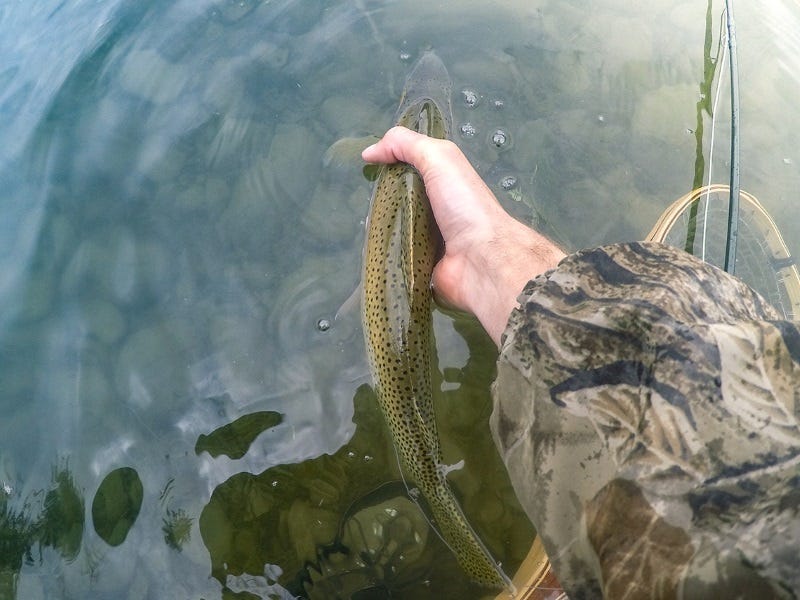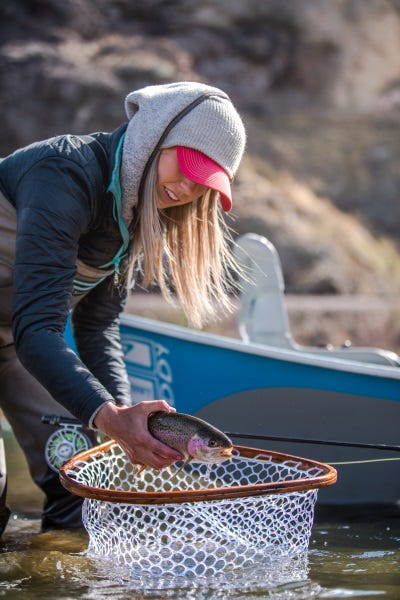Spey Tips Video Series #2: Zach Williams Shows Us How To Swing Flies For Trout

Ditch the upstream mend and get those trout flies moving.
Steelheaders are usually a step ahead of the average trout guy when it comes to understanding and applying the principles of spey-casting. Unfortunately, steelhead tradition often holds them back when it comes to tempting trout on swung flies. Conventional wisdom says that steelhead like the fly served up slow and deliberately. Steelhead may take up temporary residence in a run, but their primary objective is migration to spawning areas. They are not hunting for your fly. They don’t have to eat.
Most “steelhead” casts are angled downstream, followed with an upstream mend. This results in slowing the fly and provides a butt-first profile. The steelhead needs to see the fly and have time to decide whether to move to it or not. If the fly appears and disappears too quickly, more likely than not, it will be ignored.
Trout differ from steelhead because they are river residents that search out food for all, or at least a portion, of every day. Trout want to eat, they have to eat, but they can also be madly selective when it comes to choosing their food. One of the best ways to combat that selectivity is to provoke a quick reaction. Trout can be very aggressive toward a fleeing food source.

According to spey-guru Zach Williams, a quality trout presentation starts with the fly cast straight across the current—no upstream mend required. As the swing begins, the line bellies. The fly swims across the current, showing its full profile to a fish. Depending on current velocity, a downstream mend may be employed to maintain the profile and speed of the fly as it crosses the flow.
Trout, generally chase down and attack a quickly swimming fly. If the fly moves too slowly and deliberately, it does not make sense in their world. Prey does not linger in the current; it darts quickly for cover. Trout know they must react with determination and speed to intercept food. A slow-moving or dragging fly is often followed, and maybe even plucked at a time or two, but typically won’t receive a chomp.
To further incite the chomp, the angler may employ additional motion to the swinging fly. Pumping the rod or jigging a bit during the swing to provide an extra trigger these fish may require. On long casts, adding a few strips or even a quick retrieve during the swing elicits the grab. The only thing conventional about swinging for trout with a spey rod is the cast. Beyond that, anglers can manipulate the fly in a variety of ways that strict steel headers would ignore. That’s what keeps trout spey so lively and fun.
—Intro by Fred Telleen
